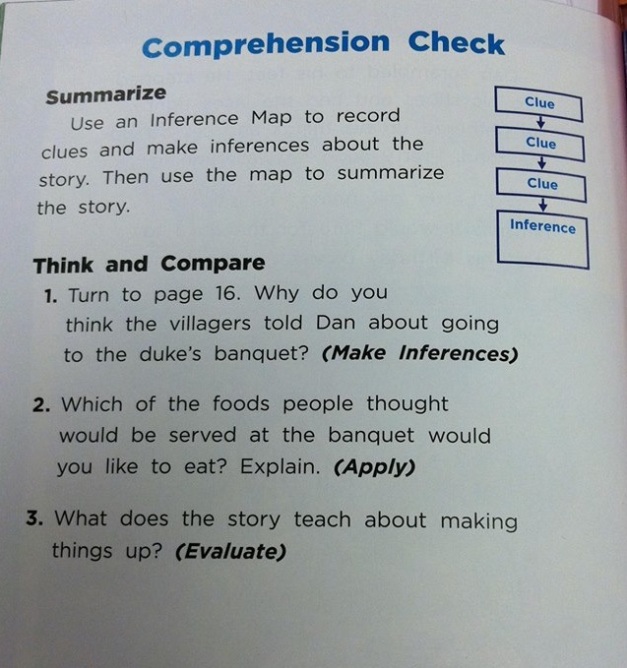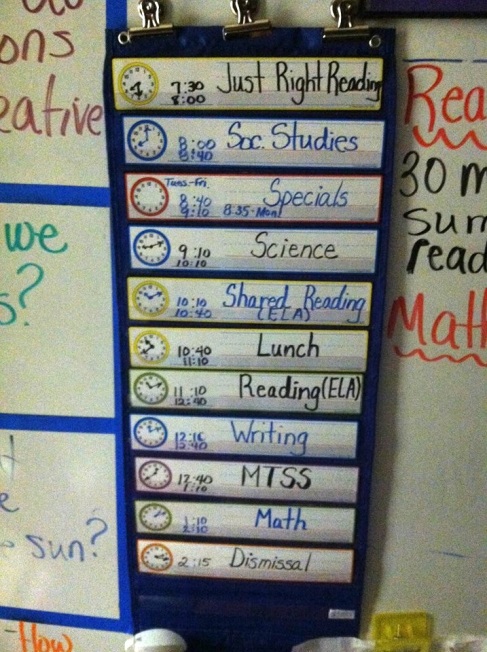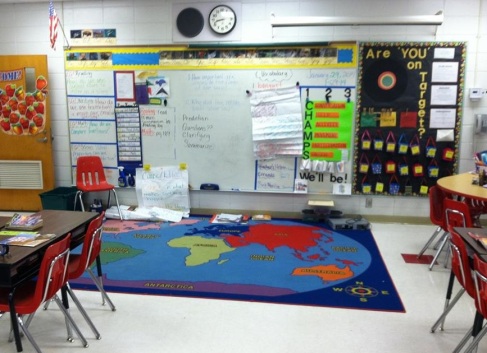This week I began my field experience in Ms. White’s kindergarten class. Having never worked with kindergarteners before, this was a new experience for me. Ms. White is an extremely pleasant and friendly lady who upon first meeting informed me that she was sorry if her voice went out or she seemed tired but she was just coming off of having spent 14 straight hours at school the previous day because of parent-teacher conferences. To me she seemed perfectly alert and energetic. After teaching for nearly 30 years, I think it is safe to say she’s a professional in every sense of the word. She walked me through how the class is structured and showed me the assignments they’d been working on this week. Each week she has a list of words that they work with and each day of the week has a homework assignment that is the same on that given day each week but pertains to the new set of words. She explained that she found home support increased when the parents were sent home this list of words and assignments for each day of the week because they knew what to expect. Ms. White also mentioned the new challenges presented by the recent introduction of common core to the kindergarten curriculum. To pass kindergarten, children are now expected to have a reading level of 4 and be able to count to 100, for example. This didn’t not sound very daunting until Ms. White mentioned that many of the children enter kindergarten unable to even write their own names or hold up the correct number of fingers on their hands to tell you how old they are. She showed me an assignment at one point from a student who she mentioned would most likely be repeating the grade. To graduate from kindergarten was something I had taken for granted and it was startling to realize that for some kids, getting held back in kindergarten is a reality.
The first noticeable difference between this classroom and the third grade classroom I had previously been in was the ambient noise. There is a constant babble and coo of little voices, quietly talking to themselves or others, providing the room with a dynamic soundtrack of its occupants. Silences are few and far between. Most students are at least in or near their seats, a feat for which the amount of time and patience it took to accomplish I can only imagine. In this class, I began working with the students from the beginning. When I initially told Ms. White that in the previous third grade class I had simply observed in the beginning, she chuckled and said that the kindergarteners wouldn’t let me get away with that.
One of the first students I worked with was April. She was having trouble with the assignment they were doing with numbers. There were multiple numbers listed from 1 to 100 and for each, the students were to write below what 10 more than that number was. This was done by using their number charts which had the numbers from 1 to 100 in a 10 by 10 grid so that all they really had to do was find the number on this chart and see which number was below it (for example 47 was below 37). When asked to read a number, April was fine with single digits but she repeatedly read the numbers in the wrong order for numbers with multiple digits. She would read 35 as 53 or 14 as 41. This was something she was only doing with these numbers however, and it did not seem to apply to her writing. For each number I would remind her of the correct order to read the numbers in and modeled with other numbers and each time she would make the same mistake. Often she would look away or lose interest or another eager child nearby would shout out the correct answer, which she would simply repeat. While working with April, I was reminded of Lev Vygotsky’s zone of proximal development and the concept of the gradual release of responsibility. Though the principle of modeling something for a student, followed by guided practice, leading to the student being able to execute the task without help sounds clear in theory, I found myself wondering at what point you as a teacher can be sure that you have sufficiently modeled a concept to a student in a meaningful way and what point you are not allowing them to grow by continuing to offer them help. If a student seems to be struggling, is it because of something else you are enabling by continuing to help them, or do they really need further assistance? These are questions I hope to better be able to answer through further experience. In the mean time, with kindergarteners, I am just learning how to teach them effectively in between asking them to put down their skirts, to not chew the pencils, and to stop licking each other. To quote what little Andrew said as he showed me the corrections he’d made to his sentences before putting them into the bin where they turn in assignments, “We keep trying, cuz we never give up! Never ever give up!”


